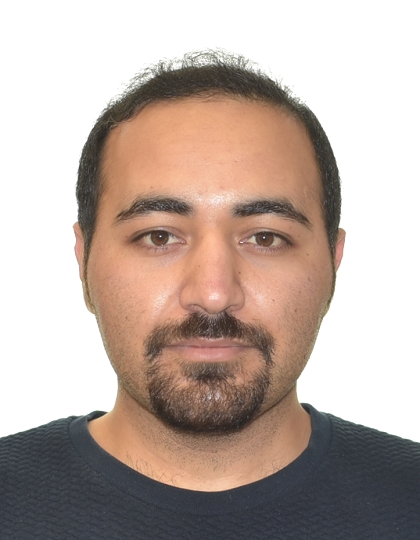Tissue Engineering
Evaluating the recellularization response of lung epithelial cells on mechanically ventilated decellularized lung scaffolds
(K-417) Evaluating the recellularization response of lung epithelial cells on mechanically ventilated decellularized lung scaffolds

Arash Zargar, Master of Science (he/him/his)
Ph.D. Student
University of Toronto
Toronto, Ontario, Canada- JS
Jason Say (he/him/his)
Research Student
University Health Network; University of Toronto
Toronto, Ontario, Canada 
Shiyuan Bian (he/him/his)
PhD candidate, University of Toronto
University of Toronto; University Health Network
Toronto, Ontario, Canada- TK
Thomas K. Waddell
Professor
University Health Network, United States - GK
Golnaz Karoubi
Assistant Professor
University of Toronto, United States
Presenting Author(s)
Co-Author(s)
Co-Author(s)
Primary Investigator(s)
Bioengineered lungs, which can be created by repopulating decellularized scaffolds with alveolar epithelial cells or alveolar progenitor cells, offer an exciting alternative for lung transplantation. However, challenges in achieving sufficient coverage, growth, differentiation, and functionality of lung alveolar epithelial cells within the scaffold persist. To address this, we propose incorporating biophysical cues, such as ventilation, during the recellularization process to better mimic the dynamic environment of the lung. Ventilation plays a critical role as a biophysical cue in the natural lung environment, as it induces cyclic mechanical stretch. This cyclic mechanical stretch, in turn, activates downstream mechanotransduction pathways that promote the growth of epithelial cells. By introducing ventilation during the recellularization of acellular lung scaffolds, we hypothesize that the resulting changes in scaffold structure would lead to an improved cellular response.
Materials and Methods::
We investigated the effects of ventilation on the response of alveolar epithelial cells (A549) and primary alveolar type II cells (ATII) to decellularized ventilated (16 breaths/min, 300 mL tidal volume) and nonventilated lung scaffolds using an in vitro mouse model. Mice lungs were decellularized to generate a lung scaffold using a combination of deionized (DI) water, Triton X100, and sodium deoxycholate chemical solutions combined with DNase solution using established protocols. Ventilation of the lung scaffolds was carried out using previously established negative pressure wet ventilation bioreactor system. Ventilated lung scaffolds and nonventilated controls were prepared into Precision Cut Lung Slices (PCLS). We seeded A549 cells at a density of 30,000 cells per PCLS and ATII cells at a density of 20,000 cells per PCLS. The cells were allowed to grow and interact with the scaffolds over a 5-day period. Throughout this time, we evaluated cell coverage, viability, metabolic activity, and proliferation. To assess cell coverage and viability we employed a live cell stain (Calcein AM) and a nonselective all cell stain (Hoescht) to quantify the viability rate as a proportion of live cells to total cells attached. To assess metabolic activity, Prestoblue assay was used. These techniques allowed us to visualize and quantify the distribution of live and dead cells, as well as to measure the metabolic activity of the cells. Additionally, we utilized Ki67 immunohistochemical staining to evaluate cell proliferation. All imaging was done using confocal microscopy.
Results, Conclusions, and Discussions::
Our data showed a significant positive impact of mechanical ventilation on the response of A549 and ATII cells within the decellularized lung scaffolds. A549 cells cultured on ventilated scaffolds exhibited an 84% increase in cell coverage, indicating improved attachment and spreading of the cells throughout the scaffold. Additionally, these cells displayed a 17% increase in cell viability and 22% increase in metabolic activity, indicating enhanced cell health and functionality. The 11% increase in cell proliferation suggests that ventilation promotes cell division and growth. Preliminary results with ATII cells also show promising outcomes, with a 156% increase in coverage rate, a 21% increase in cell viability, and a 14% increase in cell proliferation observed on ventilated scaffolds after 5 days. Taken together, our data suggests that ventilation-induced changes in the lung scaffold play a key role in mediating lung epithelial cell attachment, growth, and proliferation. These findings highlight that the incorporation of ventilation into the lung recellularization process has the potential to improve bioengineered lungs. Moving forward, our future studies will focus on optimizing the ventilation parameters to further improve the recellularization response of alveolar epithelial cells. By fine-tuning variables such as ventilation rate, tidal volume, and other relevant factors, we can maximize the positive effects of ventilation on cell behavior and functionality.
Acknowledgements (Optional): :
References (Optional): :
